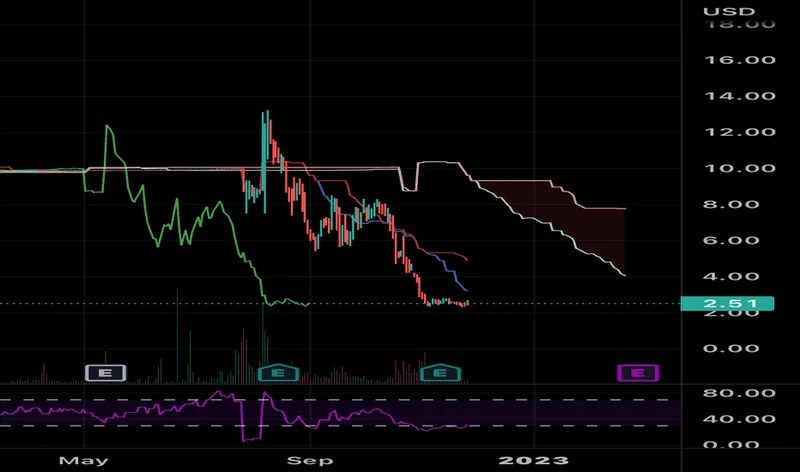I’ve been watching the stock market ticker for D-Wave Quantum (QBTS) for the past few months, and I have to be honest with you. It feels less like observing a financial chart and more like watching the first seismic readings of an earthquake that will reshape our world. A 3,000% gain in a year is, by any conventional measure, absurd. Financial analysts, bless their spreadsheets, are tripping over themselves to label it a bubble, a frenzy, a mania driven by pure speculation. And looking at the company’s modest revenue, you could easily agree with them.
But I think they’re missing the forest for the trees.
We are not witnessing a simple stock surge. We are witnessing the first mainstream financial echo of a technological dawn. This isn't just about D-Wave; it’s about the moment the abstract promise of quantum computing crashed into our tangible reality. When I first saw the latest news, I honestly just sat back in my chair, speechless. This is the kind of breakthrough that reminds me why I got into this field in the first place. The market isn't pricing in next quarter's earnings. It's trying, clumsily and frantically, to price in the next century.
For years, quantum computing has been the stuff of lab coats and whiteboards, a distant, shimmering promise. We talked about qubits and entanglement, but for most people, it was functionally indistinguishable from magic. Then, a few weeks ago, something happened that anchored this magic to the real world. It didn't happen in Silicon Valley or at a glitzy tech conference. It happened on the streets of North Wales.
D-Wave partnered with the local police department on a pilot project to optimize emergency response. The problem was a classic logistical nightmare: with a limited number of patrol cars, where do you position them to minimize the time it takes to get to any potential emergency? The classical computing approach took them four months of analysis. D-Wave’s hybrid quantum solver did it in four minutes.
Let that sink in. Four months to four minutes.

The result wasn't just a faster calculation; it was a 50% reduction in average response times. That’s not a theoretical speedup. That’s the difference between life and death. It’s the sound of a future we’ve only dreamed of arriving at our doorstep. What happens to global supply chains when a problem that once took months of human effort can be solved in the time it takes to brew a cup of coffee? What new medicines can we design when we can simulate molecular interactions with a complexity that would take today’s supercomputers a thousand years? These are the questions the market is suddenly asking.
This is the power of D-Wave’s specific approach, quantum annealing—in simpler terms, think of it less like a universal calculator that can do everything, and more like a master problem-solver, a system specifically designed to find the absolute best, most optimal solution out of a landscape of trillions upon trillions of possibilities. It’s a paradigm shift, and the North Wales pilot was the starting gun.
Of course, the skeptics are out in force. I see the headlines: “D-Wave Soars on Hype,” “Fundamentals Don’t Justify Valuation,” and even official downgrades like the D-Wave Quantum (NYSE:QBTS) Downgraded to "Strong Sell" Rating by Zacks Research. They point to the revenue—just a few million a quarter—and the massive net losses. They’re not wrong about the numbers. But they are profoundly missing the point.
You can’t value a paradigm shift with a price-to-earnings ratio. It’s like trying to calculate the value of the printing press in 1441 by looking at the sales figures for a single hand-scribed Bible. The value wasn't in the object; it was in the new capability it unlocked for all of humanity.
Watching D-Wave's stock chart is like watching a rocket launch. The fundamentals are the launchpad—small, solid, but ultimately left behind as the payload of pure potential screams toward orbit, fueled by belief. And that belief is being fed by a steady drumbeat of real progress. The new 5,000+ qubit Advantage2 system, the partnerships with NASA’s Jet Propulsion Lab to build the next generation of chips, the growing roster of clients like GE and Nikon. This isn't just about faster chips, it's a fundamental rewiring of how we approach computation itself—a shift from linear, brute-force thinking to a probabilistic, interconnected way of seeing the world that could unlock everything from designing new materials atom by atom to creating truly intelligent AI.
This is a fire being lit. A speculative one, for sure. It’s volatile and dangerous, and many people who are chasing the momentum will likely get burned. But the fire itself is real. It’s powered by tangible breakthroughs that are closing the gap between science fiction and everyday fact. And with this incredible power comes an immense responsibility for us to steer it toward solving our biggest challenges—climate change, disease, resource scarcity. This isn't just a tool; it's a new lens through which to see our universe of problems.